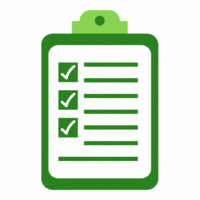Implementasi Metode Adab Role Playing untuk Meningkatkan Nilai Moral Anak Usia Dini Berbasis Youtube
DOI:
https://doi.org/10.35473/ijec.v4i1.1034Keywords:
Role Playing etiquette, Youtube, Children's MoralsAbstract
In the era of the 21st century industrial revolution, technology is not something that children should avoid using, because during the pandemic online learning applies to all schools in all parts of the world. YouTube content is one of the things that are most in demand and liked by children, but not all content on YouTube is educational. Considering that youtube is the social media closest to children, this study designed the use of youtube content with role playing manners to increase children's moral values. Learning is packaged nicely and interestingly, as children like with a duration of broadcast that is appropriate for their age. This research was conducted in the 365 online program, with the subject of children aged 3-4 years. Data collection techniques were taken through observation and documentation. The analysis technique was carried out in a qualitative descriptive manner. This research was successfully carried out to improve moral values in children's daily lives because the method used was designed so that children were easy to understand and apply in a variety of activities.
References
Admiration, Jurnal Syntax, and Sosial Teknik. 2021. “No Title.†2(5).
Ananda, Rizki. 2017. “Implementasi Nilai-Nilai Moral Dan Agama Pada Anak Usia Dini.†Jurnal Obsesi : Jurnal Pendidikan Anak Usia Dini 1(1):19. DOI: 10.31004/obsesi.v1i1.28.
Andi, R., and Ahmad Gunadi. 2013. “Membentuk Karakter Melalui Pendidikan Moral Pada Anak Usia Dini Di Sekolah Raudhatul Athfal (R.a) Habibillah.†Jurnal Ilmiah WIDYA 85:85–91.
Ilyas, Rahma, and Yayah Nurhidayah. n.d. “Penerjemahan Lagu Anak Berbahasa Inggris Dalam ‘ Youtube ’ Berbasis Pendidikan Karakter Anak Usia Dini Berbasis Pendidikan Karakter Anak Usia Dini . Hal Ini Supaya Orang Yang Mengajarkan Baik Itu Equivalent of the Source Language Message , First in Terms .†11(1):1–13.
Junaedi Sitika, Achmad. 2018. “Pembentukan Akhlak Al-Karimah Pada Anak Usia Dini.†Hikmah: Indonesian Journal of Early Childhood Islamic Education 2(1):1–12.
Maqsudah, Nihayatul, and Rina Insani Setyowati. 2020. “PEMANFAATAN YOUTUBE SEBAGAI MEDIA BELAJAR ANAK USIA DINI DI MASA COVID-19 BERBASIS.†95–101.
Pendidikan, Fakultas Ilmu, Universitas Negeri Surabaya, Fakultas Ilmu Pendidikan, and Universitas Negeri Surabaya. n.d.
Prasanti, Ditha, and Dinda Rakhma Fitrianti. 2018. “Pembentukan Karakter Anak Usia Dini: Keluarga, Sekolah, Dan Komunitas.†Pembentukan Anak Usia Dini : Keluarga, Sekolah, Dan Komunitas 2(1):15.
Putra, Asaas, and Diah Ayu Patmaningrum. 2018. “THE INFLUENCE OF YOUTUBE ON SMARTPHONE TOWARDS DEVELOPMENT OF CHILD ’ S INTERPERSONAL COMMUNICATION.†21(2):159–72. DOI: 10.20422/jpk.v21i2.589.
Salehudin, Mohammad. 2020. “Literasi Digital Media Sosial Youtube Anak Usia Dini.†Jurnal Ilmiah Potensia 5(2):106–15.
Susanto, Ahmad. 2017. “Proses Habituasi Nilai Disiplin Pada Anak Usia Dini Dalam Kerangka Pembentukan Karakter Bangsa.†Sosio Religi: Jurnal Kajian Pendidikan Umum 15(1):18–34.
Downloads
Published
How to Cite
Issue
Section
License
Copyright (c) 2023 Indonesian Journal of Early Childhood: Jurnal Dunia Anak Usia Dini

This work is licensed under a Creative Commons Attribution-ShareAlike 4.0 International License.
Please find the rights and licenses in Indonesian Journal Of Early Childhood: Jurnal Dunia Anak Usia DIni. By submitting the article/manuscript of the article, the author(s) agree with this policy. No specific document sign-off is required.
1. License
The non-commercial use of the article will be governed by the Creative Commons Attribution license as currently displayed on Creative Commons Attribution-ShareAlike 4.0 International License.
2. Author(s)' Warranties
The author warrants that the article is original, written by stated author(s), has not been published before, contains no unlawful statements, does not infringe the rights of others, is subject to copyright that is vested exclusively in the author and free of any third party rights, and that any necessary written permissions to quote from other sources have been obtained by the author(s).
3. User Rights
Indonesian Journal Of Early Childhood: Jurnal Dunia Anak Usia Dini's spirit is to disseminate articles published are as free as possible. Under the Creative Commons license, Indonesian Journal Of Early Childhood: Jurnal Dunia Anak Usia Dini permits users to copy, distribute, display, and perform the work for non-commercial purposes only. Users will also need to attribute authors and Indonesian Journal Of Early Childhood: Jurnal Dunia Anak Usia Dini on distributing works in the journal and other media of publications.
4. Co-Authorship
If the article was jointly prepared by more than one author, any authors submitting the manuscript warrants that he/she has been authorized by all co-authors to be agreed on this copyright and license notice (agreement) on their behalf, and agrees to inform his/her co-authors of the terms of this policy. Indonesian Journal Of Early Childhood: Jurnal Dunia Anak Usia Dini will not be held liable for anything that may arise due to the author(s) internal dispute. Indonesian Journal Of Early Childhood: Jurnal Dunia Anak Usia Dini will only communicate with the corresponding author.
5. Miscellaneous
Indonesian Journal Of Early Childhood: Jurnal Dunia Anak Usia Dini will publish the article (or have it published) in the journal if the article’s editorial process is successfully completed. Indonesian Journal Of Early Childhood: Jurnal Dunia Anak Usia Dini's editors may modify the article to a style of punctuation, spelling, capitalization, referencing and usage that deems appropriate. The author acknowledges that the article may be published so that it will be publicly accessible and such access will be free of charge for the readers as mentioned in point 3.
Â
Every accepted manuscript should be accompanied by "Copyright Transfer Agreement" prior to the article publication.



